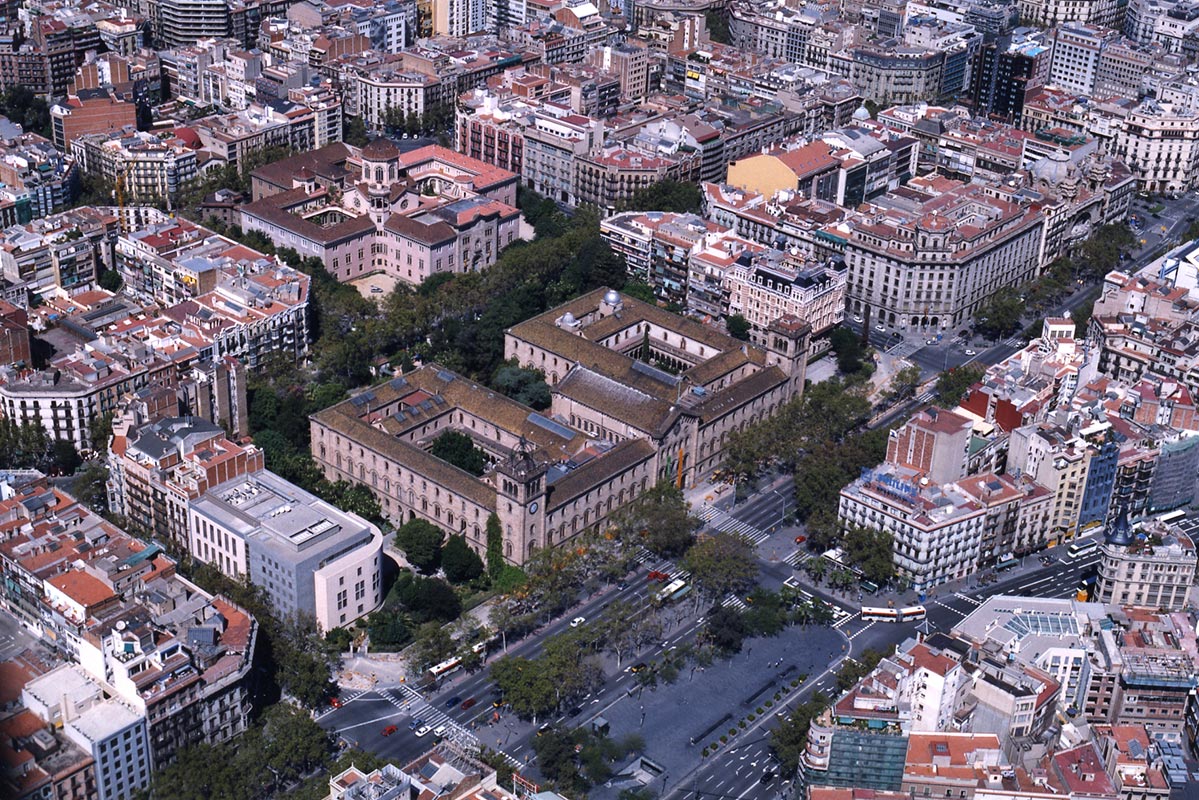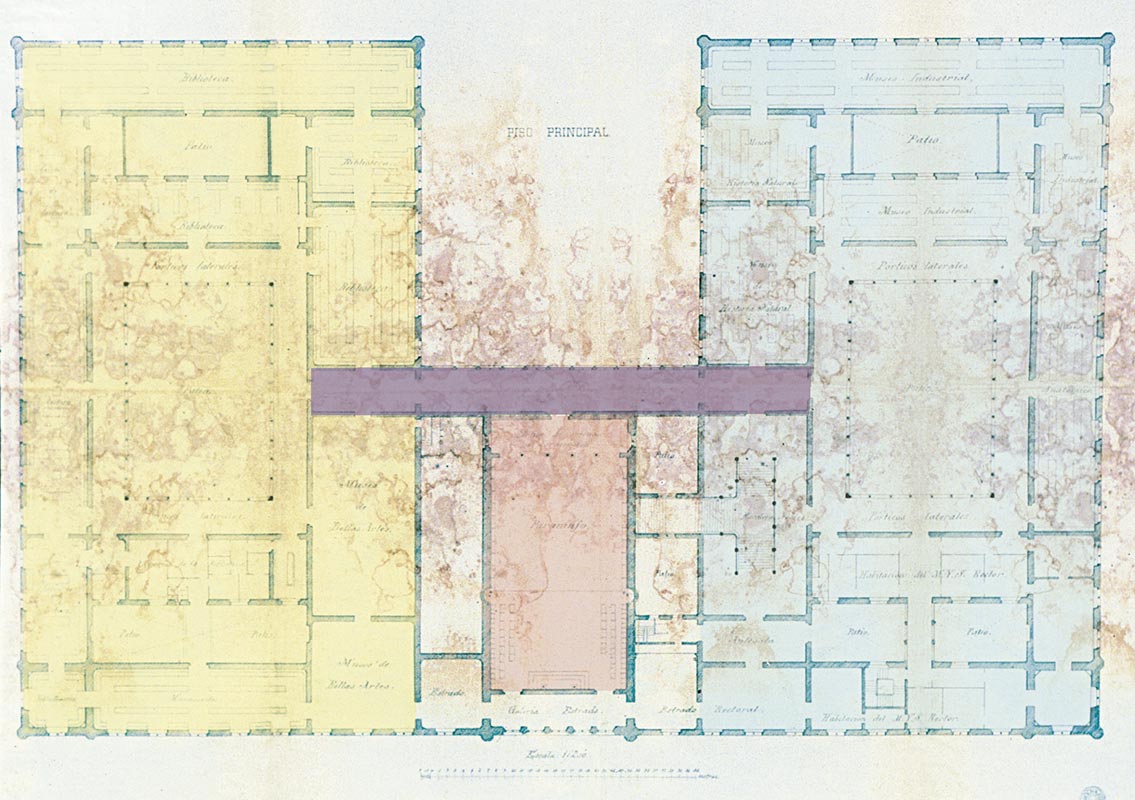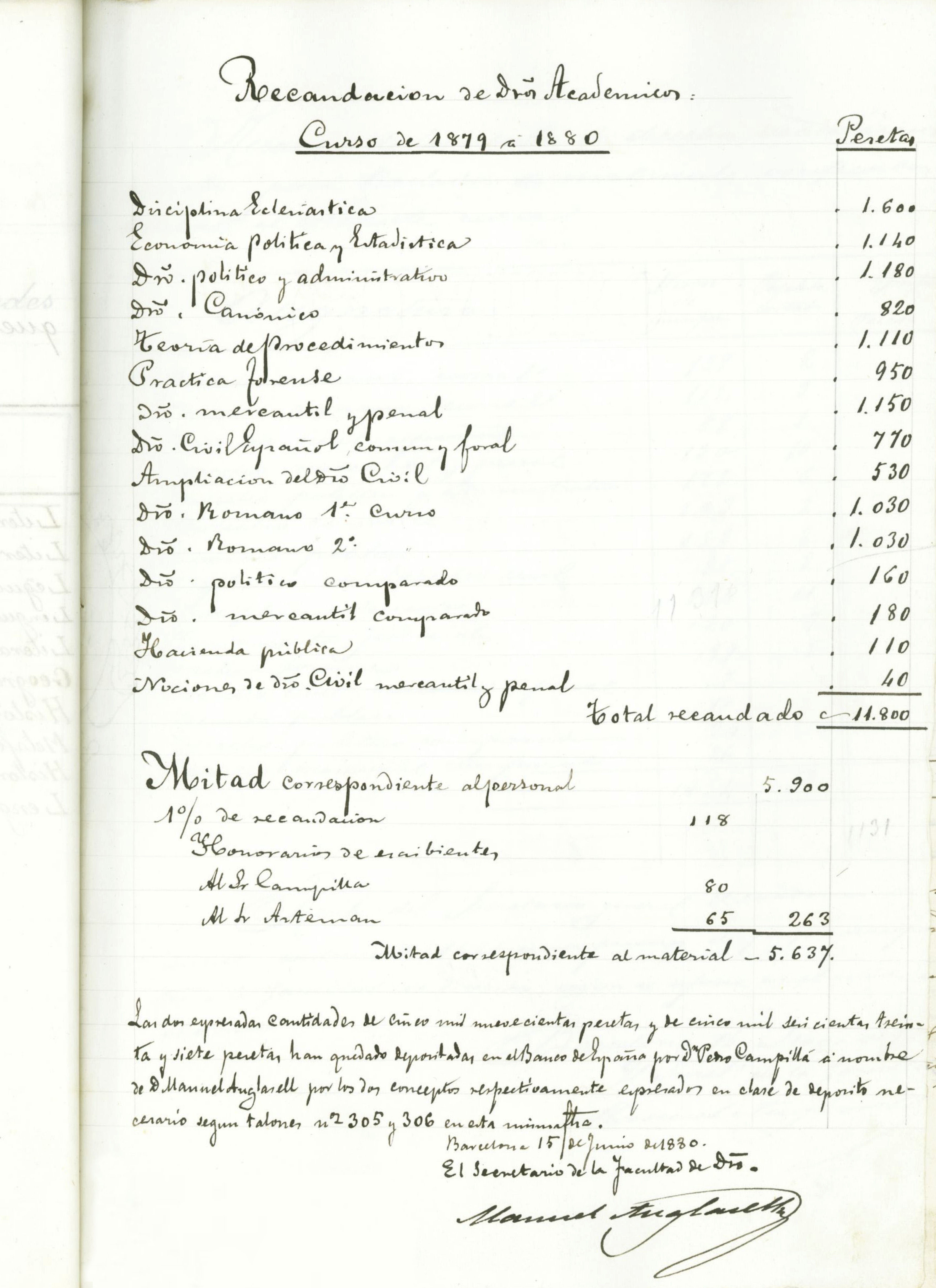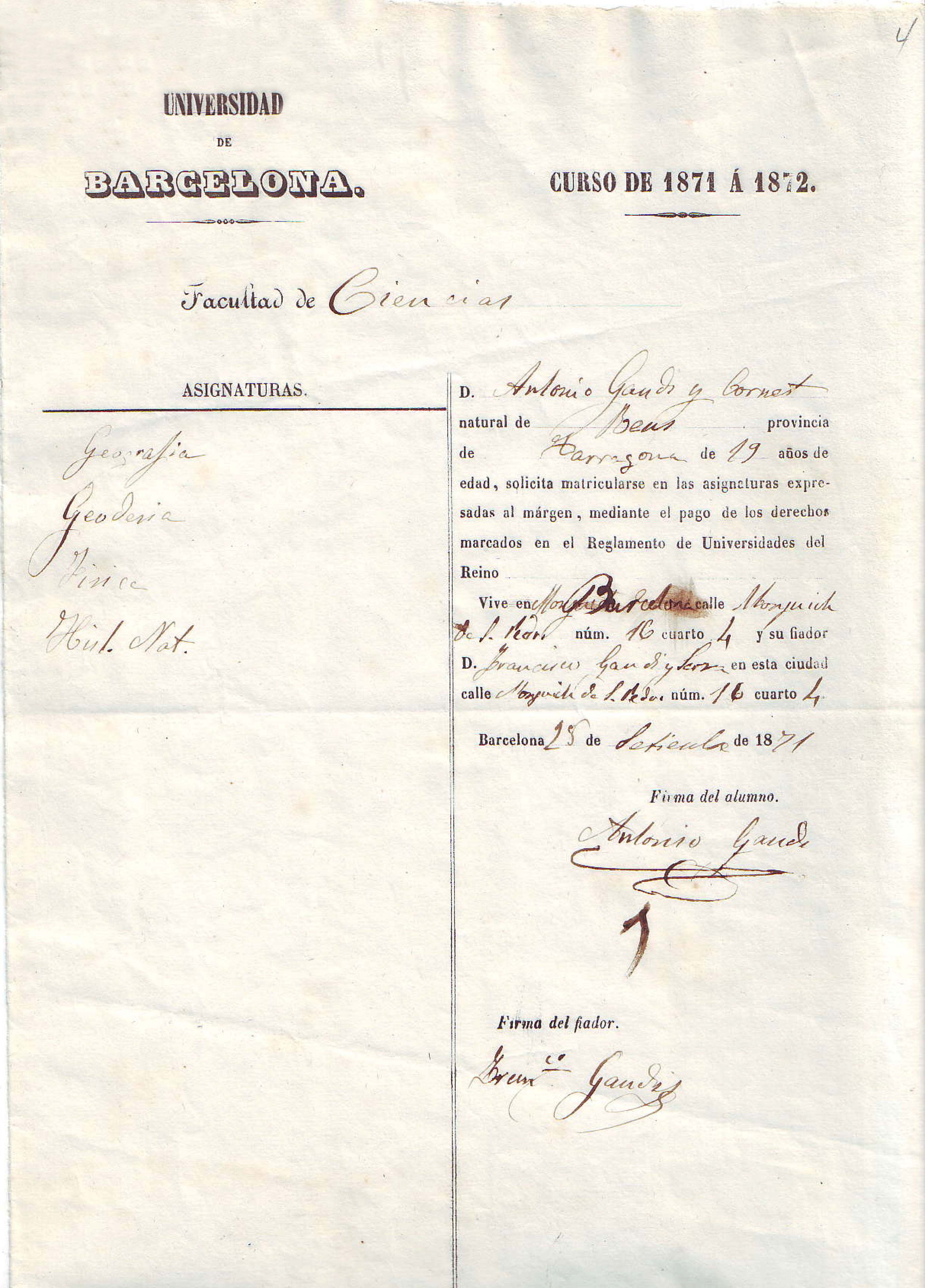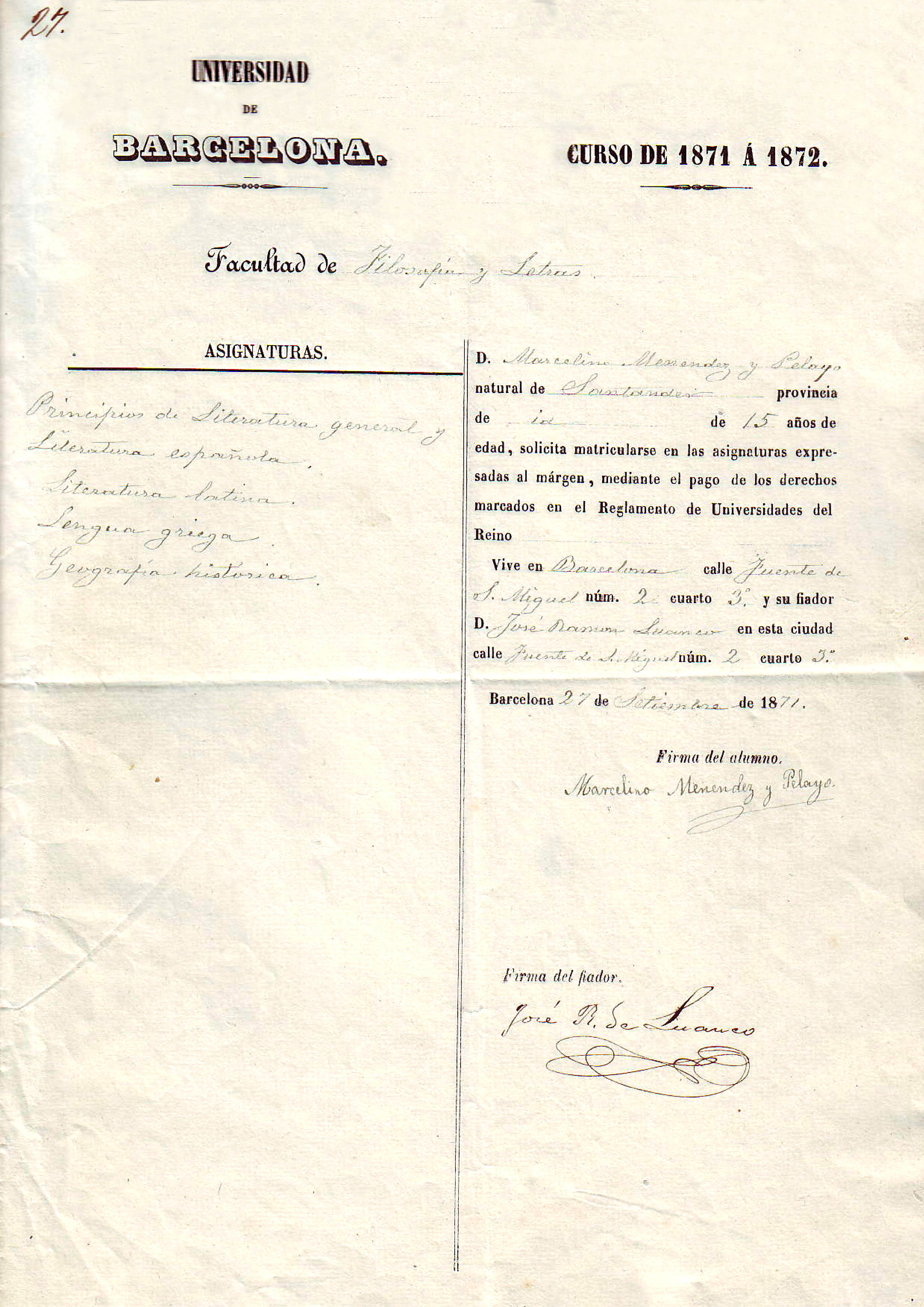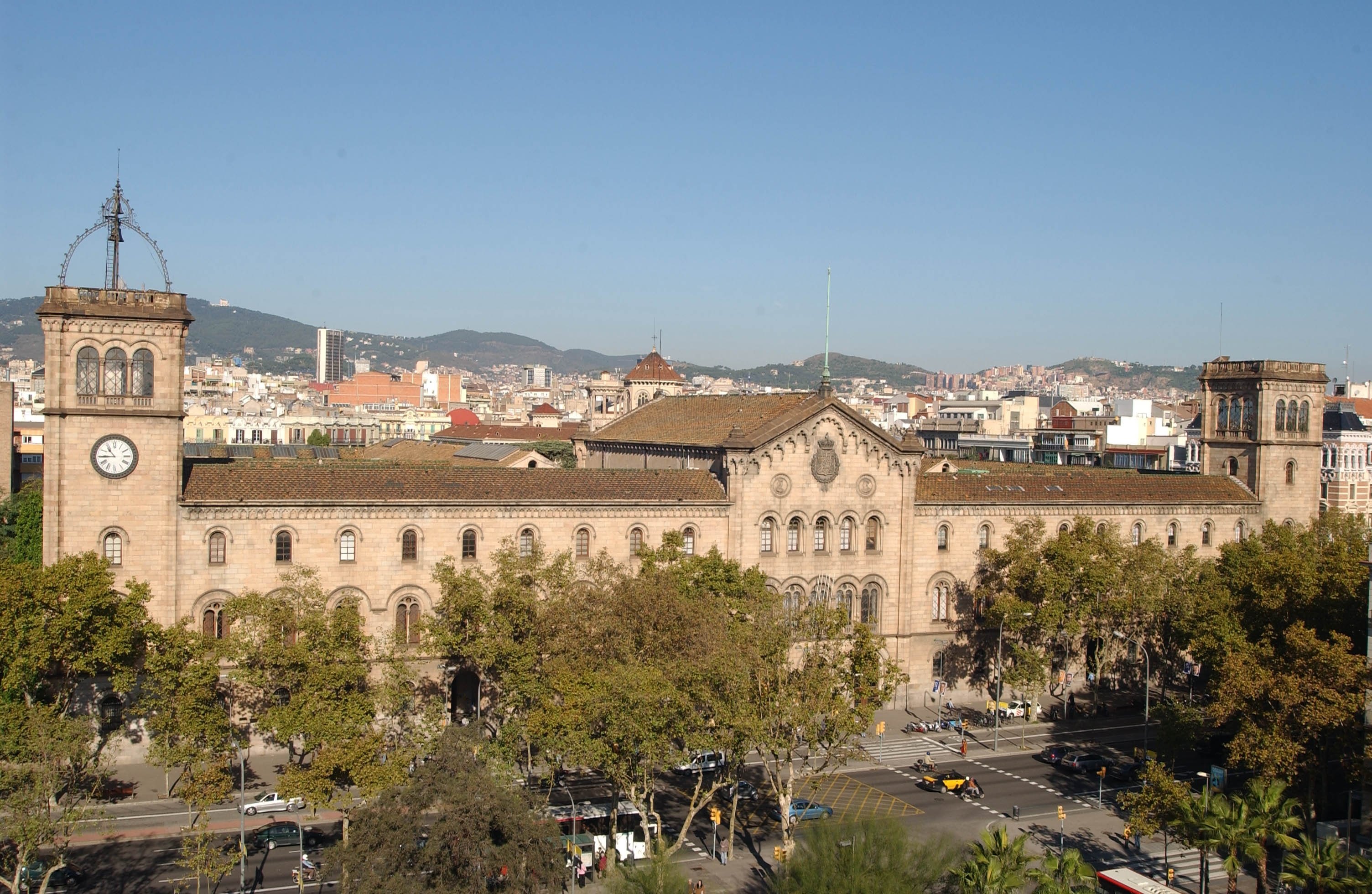
The architectural concept of the Building
On 24 August 1859, during Víctor Arnau's period as Rector, the architect Elias Rogent was commissioned by royal order to create the following design:
"Design for the University of Letters of Barcelona, which will contain the faculties of Law, Philosophy and Arts, Medicine, Sciences, Pharmacy, the Higher School of Industry, the Professional School of Fine Arts, the university and provincial library and the corresponding museums."
More information
The University building was constructed between 1863 (the year the first stone was laid, with Víctor Arnau as Rector) and the years 1892 and 1893. Although it was not officially opened until the course 1872-1873, the first classes were given there in 1871. It should be pointed out that the project was paid for, managed and controlled by the State, and this was translated into the notable presence of representations of power in the Building, as we will see.
The Historic Building clearly reflects the theories upheld by Rogent about the way architecture should be: following the ideas of Francesco Milizia, architecture was fundamentally “expressive”; that is, it was intended to express some content. To achieve this, in his design for the University of Barcelona, Rogent made use of an eclectic architecture, seeking the best solutions in the forms of the past through the simultaneous use of elements corresponding to such varied historical styles as Romanesque, Mudejar or Gothic.
With the idea of creating expressive architecture, in the design for the University from Barcelona, Rogent deliberately sought to show the most important part of the building, both for academic life and from the symbolic point of view, and to organize the rest of the composition based on this.
So, the entire architectural composition is developed around a single core: the Paranymph Hall. According to Rogent, the Paranymph Hall is where the only activity demonstrating the uniqueness of the highest level of university knowledge takes place – the award of the degree, differentiated from other common activities (in all faculties) and symbolizing all the interests of the institution. It symbolizes “the idea of university”. This central body also contains the main entrance to the building and the majestic vestibule.
Rogent not only places the Paranymph Hall at the centre of the entire construction but he also makes it an element joining the two parts in which the building is developed; that is, at the centre of the transversal axis, articulating the whole building: on one side is the Arts building, on the other, Sciences: two equal, symmetrical parts which, joined on the ground floor by a long gallery of arcades, spread out on either side of the central body.
Each of these parts is structured around a courtyard with porticos repeated on the ground floor and first floor. In the first design presented by Rogent, the porticos were planned only for the ground floor, with arches on pillars. This solution, very much in line with the German Rundbogenstil, which so inspired Rogent, was altered to produce the definitive two-storey idea, with columns instead of pillars.
He also scrupulously adopted the ideas of the Italian theorist Milizia, who so influenced him and who upheld the idea that a university must contain the following elements: organization around a porticoed courtyard, lateral towers, a clock tower, lecture rooms arranged on the ground floor with other more institutional facilities on the upper floor, and a square in front of the building.
All these elements actually appear in the Historic Building of the University of Barcelona, although some decisions altered a great deal in the course of the different designs presented by Rogent, such as the clock tower, which was originally placed in the centre of the façade, crowning the central body. Finally, the clock and the iron bell tower were installed in the Arts Courtyard tower in 1881.
As for the façade, this was planned based on two strategic points – the central body and lateral towers – joined by two massive, solid looking horizontal bodies, lightened, however, by a continuous succession of openings with round arches, following the German style.
A year after the first stone of the building was laid (1863), the artistic and decorative work subsidiary to the general architectural programme began, and a sculpture workshop for artists and craftsmen was set up on the university site itself.
The decorative programme of the Historic Building is a very important element that must be borne in mind as, although it is subsidiary to the architectural design, it was intended to reinforce the ideology and symbolism the building was meant to show.
Finally, the gardens on to which the building opened at the back and sides should be highlighted. They surrounded the whole U-shaped structure of the building, except for the façade. The railings closing off the garden were designed by Rogent, but they were put up between 1892 and 1893, by which time Rogent had left his post as director of works (1889). The gardens were subsequently laid out during the period when the University of Barcelona enjoyed a Statute of Autonomy during the Second Republic.

